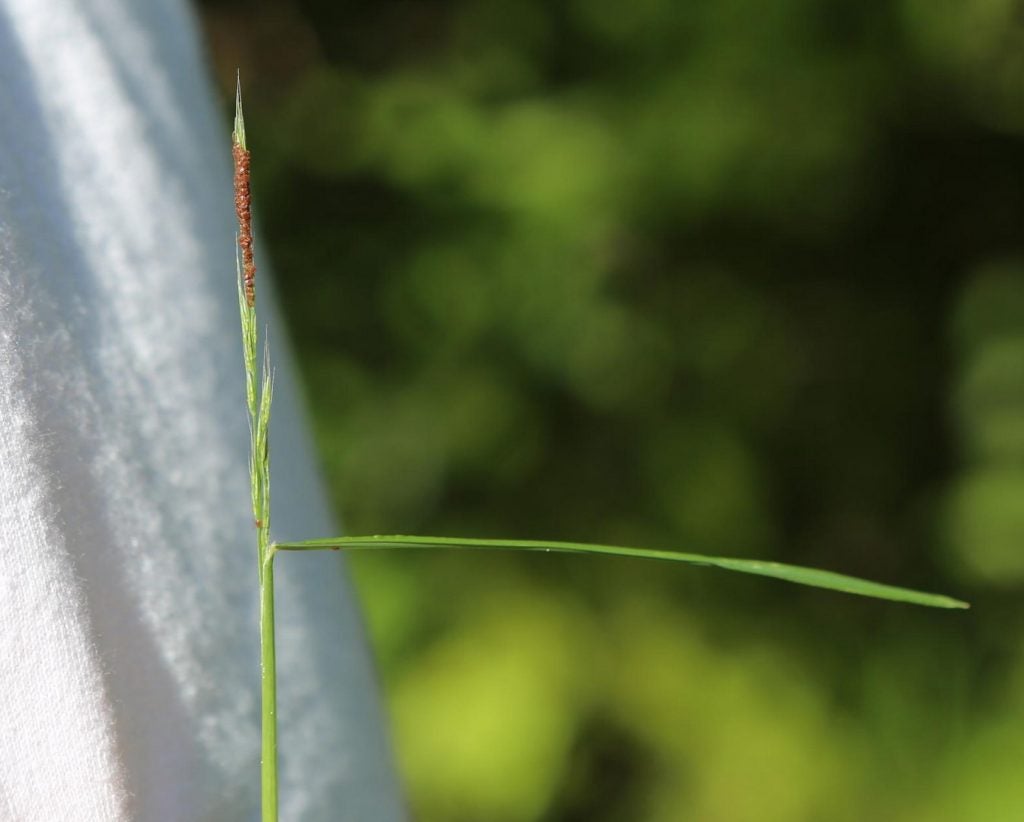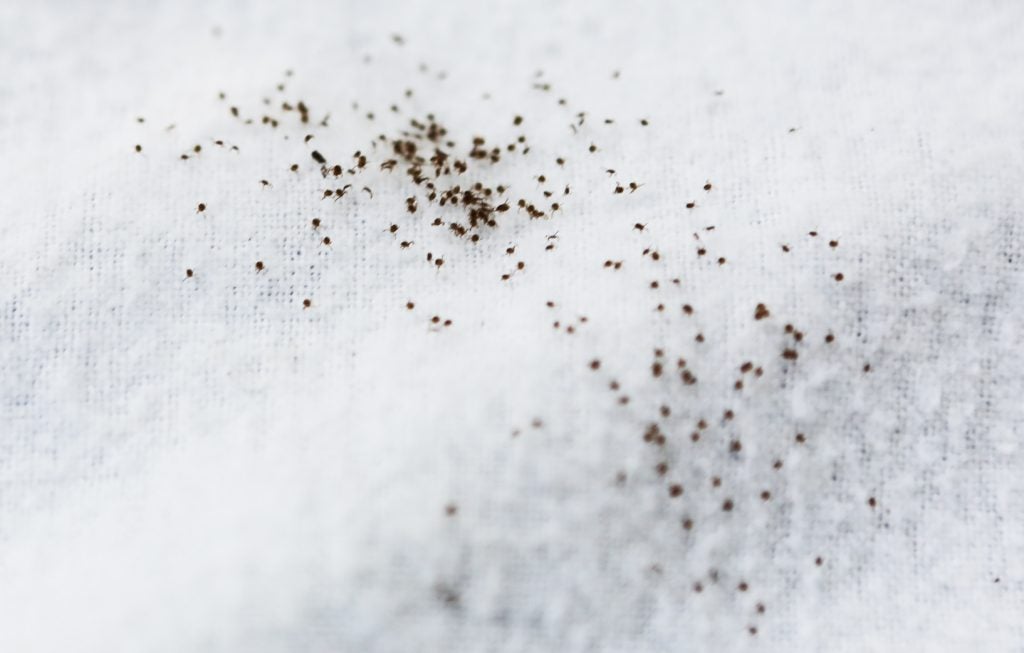Late in the evening Sunday August 12. Only 4 more TickSpotters pictures left to look at today. But wait, what’s THAT one. This TickSpotter had sent in something different; a simple picture of a suspicious-looking tick found on their dog after a walk earlier that day in a Staten Island (NY) park. Definitely genus Haemaphysalis, but which one of the 3 possible species: one mainly feeds on rabbits, one on birds, and the third is a presumably still rare but recently recognized exotic invader from Asia – the longhorned tick. It couldn’t be that one, could it? Well, maybe. We emailed the submitter about the possibilities and asked them to mail the tick in to the lab for a closer examination. They did. It was!! The Asian longhorned tick. It was my first.
Since then, TickSpotters have sent additional suspicious-looking ticks — from Somerville NJ, Harrison NY, Front Royal VA, Newtown PA…a bit unprecedented. Our TickSpotters crowd-sourced survey only had 3 Haemaphysalis spp. submissions over the past 2 years, presumably the rabbit type, yet here were 5 in just 3 weeks. It was late in the summer of 2018 and something new was happening in the world of ticks…and I thought to myself “this TickGuy needs to know more”. That’s when the idea of a field trip popped into my head—”let’s go find some longhorned ticks.”
After securing the probable tick encounter location on Staten Island, ITM project manager Steve and I headed south. We arrived at our destination early; it was going to be a hot day. Vials and tweezers in hand, we hurriedly unfurled our tick flag and drag, and within 20 feet of getting out of the car, pretty much still in the parking lot, our drag was already covered with microscopic tick larvae. “These must be Lone Stars”, I boldly announced. “We’ll collect some and check under the microscope later;” we needed to keep moving if we hoped to encounter those rare longicornus ticks.
But it was only one more short pull of the drag when Steve announced, “I think I have one”! It was, but it was weird. This one was a partially-engorged female tick. You don’t usually collect partially-engorged ticks on a tick drag. We were just fifty feet from the car, and less than 5 minutes into our longhorned tick collecting field trip; and it all just seemed, well, strange. I now had no idea what to expect next…but, boy was this FUN!
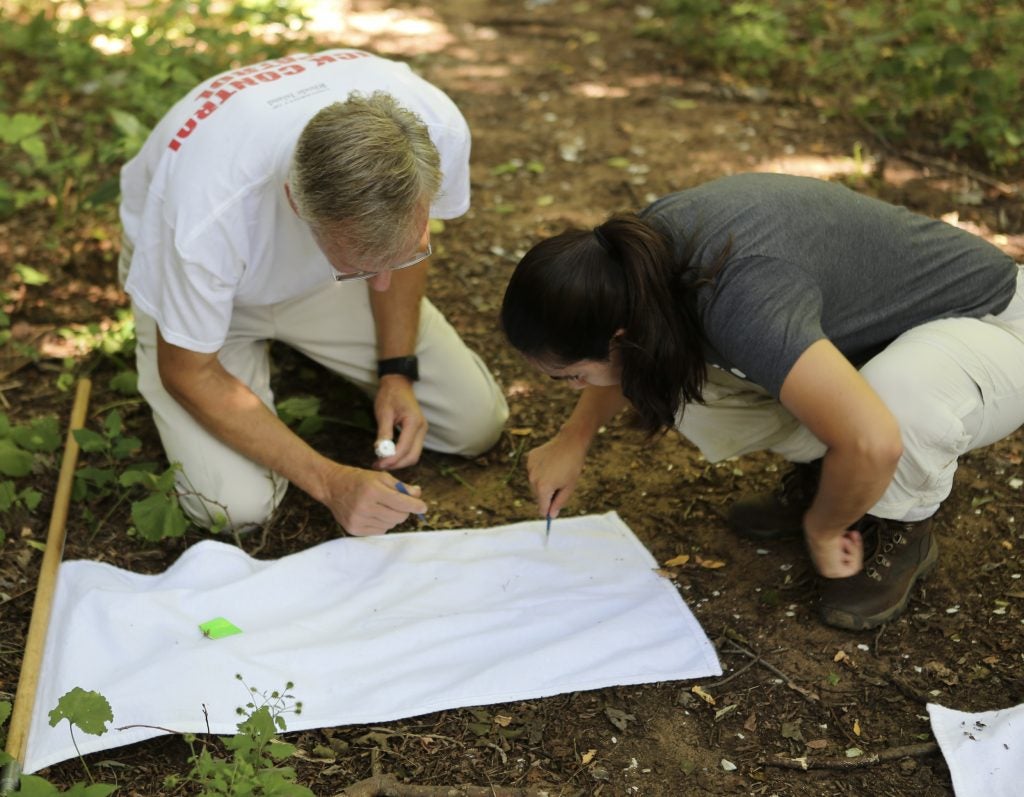
Soon we were joined by post-doc Maria Pilar, a gracious Argentinian scholar working with Maria Diuk-Wasser at Columbia on a project to better understand where, how and why people encounter ticks. She’d been working the Staten Island parks and backyards all summer – and had become a bit of a longicornus expert. Or at least a more experienced longicornus collector than Steve and me. Good to have her with us. We turned off the main path and onto a narrow trail into the woods. Still getting more larvae and an occasional larger tick, too. But now it felt more like the hunt was on.
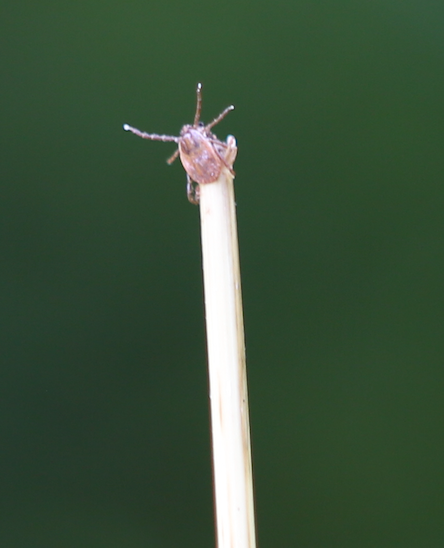
In a few minutes, we emerged onto a wider grassy path with shady edges. This would become our classroom for the rest of the morning, a one hundred meter stretch of various grasses and shrubs. We were picking up more ticks now—mostly adult females, 4,5,6 … they were starting to accumulate in my collecting vial. They seemed to prefer shade over sun but then I spotted one questing on a stem right along the edge of the path about a foot from ground level, head pointing down. A curious questing pose; American dog ticks tend to quest head up. This one turned quickly to climb a little higher on the stick, it’s front pair of legs outstretched in hopeful anticipation that I might come closer. After that one, I started to look more closely.
That’s when a dark patch on a grass seed-head caught my eye. Most people might have thought they were seeds. But this was my first big surprise of the day, and something Pilar and Steve had never seen either; these were larval ticks — 50, 75, 150 – motionless, tightly clumped, seemingly knitted together almost like the overlapping scales on a snake, but tiny. And once we saw a few of these clumps, we started seeing them everywhere. In certain grassy patches there would be one every couple of feet—each of these likely the product of a single female egg batch. I thought, “this is not a rare tick, at least not here.”
Surprise #1: Longicornus larvae hang out together on the tips of grasses, but like a bomb, they explode when something brushes by.
Even though I had spotted the adult female, and the larvae clumps, it seems my eyes aren’t what they used to be. As I was picking larger-than-larvae nymph stage ticks off of the flag, I tried separating what I thought were nympal Lone Star ticks from what I thought were nymph longhorned ticks. I even put them into separate vials. It seemed that I had collected twice as many Lone Stars than longhorned nymphs but when I checked under the microscope, I had some re-sorting to do, and as it turned out I had collected about equal numbers of both types of nymphs. Lone Star nymphs were still the fastest moving ticks but when they’re sitting still you really have to look hard at the mouthparts to tell them apart.
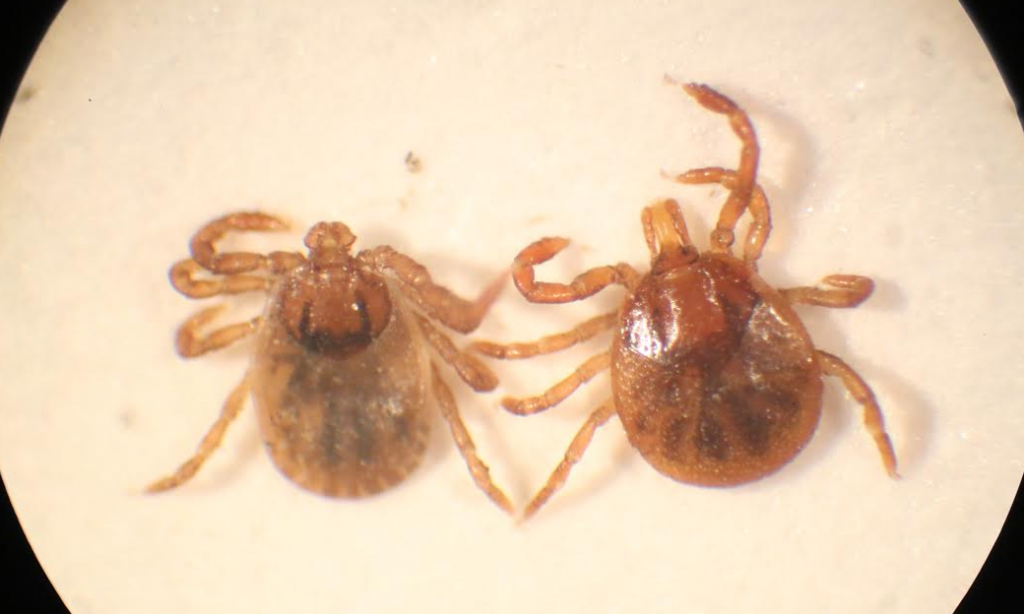
Surprise #2 – Without magnification, nymphal Asian longhorned ticks look very similar to nymphal Lone Star ticks.
But my biggest surprise of the day was in witnessing first hand just how extensive this infestation appears to have become in presumably a fairly short period of time. First recognized just about one year ago on a single sheep at a single location in New Jersey, now we were wandering about one of several fairly extensive parks on Staten Island surrounded by a massive residential community in one of the most densely urban settings in the United States. We were passing dog walkers and day hikers all pretty much minding their own business and completely unaware of what we were finding. But what we were finding was all three active life stages of this longicornus tick…pretty much everywhere we looked. The edge of the parking lot, along walking trails, in the woods.
Surprise #3 – Asian longhorned ticks are way more established than I expected to find.
We know this tick is a little different than the ones we’re more familiar with – like, it doesn’t need a male to fertilize its eggs. There’s so much we don’t know though, like will it readily feed on humans and pets, what germs might it carry and transmit, will it be susceptible to tick prevention products? We had started the day wondering if we would find anything on our field trip, and in only 6 hours finished the day just wondering. Looks like we have a new tick, now found in 9 states (15 states as of the end of 2020), but from what we learned on this one field trip, that’s not likely to be where the reach of this tick stops, or where this story ends either.

